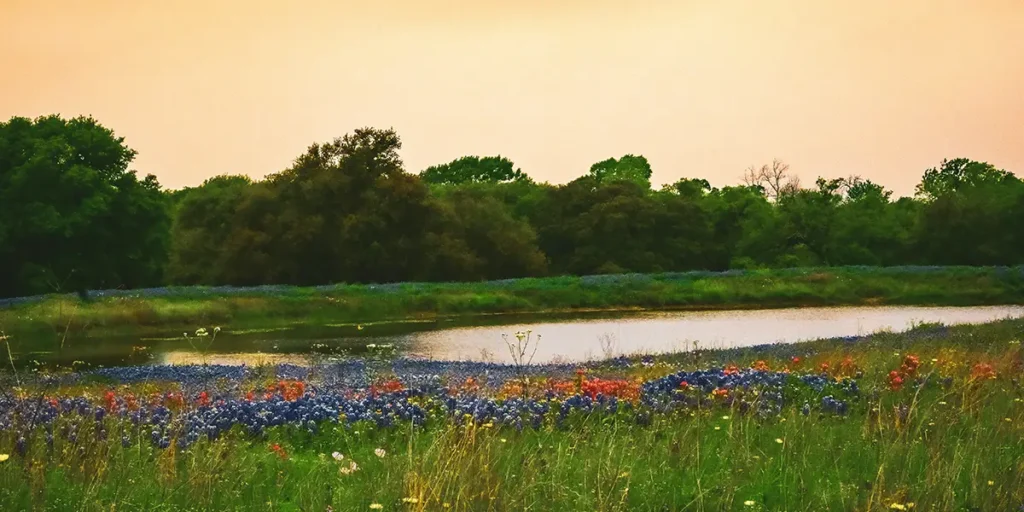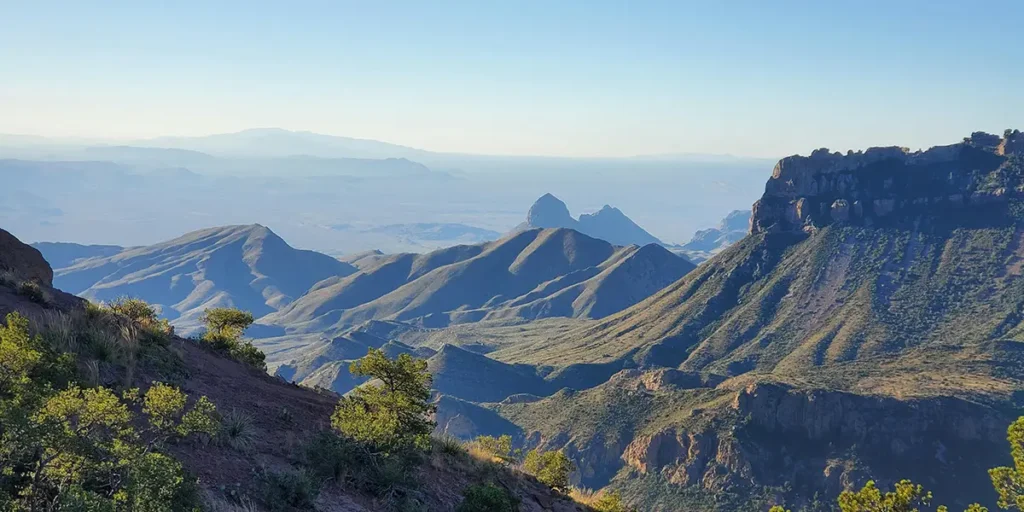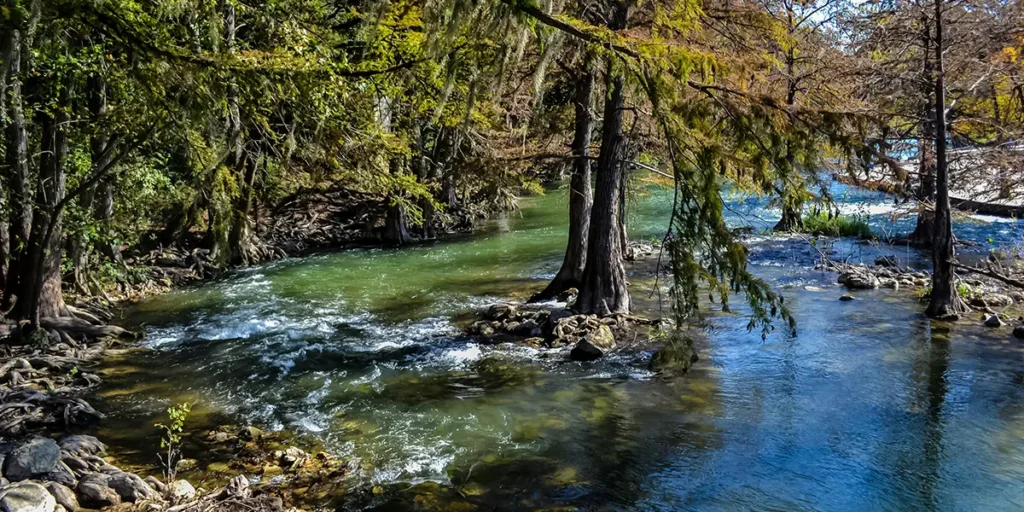Ecotourism, also called nature-based tourism, incorporates sustainability and conservation of natural areas, respecting the environment, and respecting local cultures. Ecotourism programs are managed to promote positive impacts on natural areas, the local communities where they operate, and the enjoyment of nature.
Agritourism couples agricultural production and/or processing with attracting visitors to a farm, ranch, or agricultural enterprises to entertain and educate tourists while providing another source of income for the agricultural business owner/operator. The Texas Parks and Wildlife Department (TPWD) reports,
“The goals of nature-based tourism in Texas are to: promote habitat conservation, promote sustainable economic development, and build broad-based public support for wildlife conservation programs. Texas Parks and Wildlife has chosen to implement a nature-based tourism program that is uniquely suited to a private land state such as Texas.”
Texas Bat Watching
Did you know that Texas is home to 32 species of bats of the 47 found in the U.S.? The largest known bat colony on earth resides in Texas. One of Texas’ most famous Mexican free-tailed bat watching sites is at Austin’s Congress Avenue Bridge. Texas has more public bat watching sites than anywhere else in the U.S.
Birding in Texas
Some of the most famous birding sites call Texas their home. The National Audubon cites that the Aransas National Wildlife Refuge, Bolivar Flats, Big Bend National Park, and High Island are especially rewarding. Big Bend has the highest number of bird species of any U.S. national park. Birding and wildlife trails cover the entire state of Texas.
Great Texas Wildlife Viewing Trail Maps
The TPWD publishes websites with interactive maps and print materials on wildlife viewing areas in state and national parks and other places.
Texas Master Naturalist Program
Anyone can become a Certified Texas Master Naturalist Volunteer. Master naturalist volunteers teach children and adults about Texas’s natural resources. After training, volunteer master naturalists share their expertise by providing educational activities, developing projects, or giving demonstrations.
In-depth training programs in wildlife and natural resource management taught by recognized experts in the field are customized to focus on the native ecosystems of your area. There are opportunities for advanced training in special subjects that interest you.
Texas Nature Trackers Program
Texas Nature Trackers (TNT) are a part of the Texas Wildlife Diversity Program. They track the status of wild populations of plants and animals throughout Texas. TNT projects are a wonderful way to learn more about the biodiversity of the state and contribute to TPWD’s research and conservation efforts.
Texas Paddling Trails
Texas is home to 3,700 named streams, 15 major rivers and around 3,300 miles of Gulf Coast tidal shoreline. Hundreds of paddling adventures and angling opportunities in a canoe or kayak in Texas provide intimate wildlife watching, without disturbing the animals.
Texas paddling trails provide well-mapped accessible day trips for all levels of paddling experience in the diverse ecosystems settings across the state. The TPWD offers 82 official Texas paddling trails, with more of them added each year as this program expands. TPWD will partnership with communities interested in developing a paddling trail in their area.
Wildlife Viewing Sites That Are Wheelchair-Accessible
Many Texas State Parks, Wildlife Management Areas, Historic Sites, and nature and education centers offer wheelchair-accessible features, which include trails, campsites, restrooms, and exhibits. In addition, Texas is home to a number of National Wildlife Refugees, Park Service Sites, and Forest Service Sites. Contact or go to the park or area’s websites for complete information on the ADA accessible amenities available.

Wildscapes Program for Native Gardening
Texas Wildscapes is a habitat restoration and conservation plan for rural and urban areas. Texans can contribute to wildlife conservation by developing wildlife habitats where they live, play, or work. Even when this program is not accepting applications, property owners can certify their landscapes through the National Wildlife Federation’s Certified Wildlife Habitat program.
The TPWD teaches landowners to restore habitats for birds, insects, small mammals, and reptiles on their properties. These habitats must obey local and county ordinances. Small changes in landscapes can result in significant improvements for wildlife habitats.
A basic tenet of wildlife management in Texas is to assist private land managers with information, technical assistance, and incentives to manage wildlife populations for the public good as well as for individual economic gain. Currently, Texas landowners receive substantial revenue from wildlife-associated recreation via hunting and fishing leases.
Texas State Ecotourism Programs
Ecotourism in Texas focuses on habitat conservation with assistance to private landowners, communities, businesses, and local community leaders who want to include nature-based tourism as an integral part of their business and community.
TPWD Current Programs
- Bat-Watching Sites of Texas
- Birding
- Great Texas Wildlife Viewing Trail Maps
- Guide to Texas Wildlife Watching
- Texas Master Naturalist Program
- Texas Nature Trackers Program
- Texas Paddling Trails
- Texas State Park Guide
- Wildlife Viewing Sites That Are Wheelchair-Accessible
- Wildscapes Program for Native Gardening

Guide to Texas Wildlife Watching
When looking for wildlife, you may catch a glimpse of an animal just in time to see it flee, a flash of an antler or a bird flapping off. Most wildlife, even fish, can see, hear, and/or smell you way before you see it. They look you over and decide whether to fight or fly. This saps their vital energy.
Tips from experienced Texas Parks and Wildlife animal behavior watchers:
- Fade Into the Woodwork
- Wear natural colors and unscented lotions.
- Remove glasses that glint.
- Walk softly so as not to snap twigs or trample wildflowers.
- Crouch behind boulders or vegetation to blend your figure or break up your outline.
Camera Tips
- Use at least a 400 mm lens.
- Have the sun at your back – afternoon light is best.
- Aim for featuring wildlife within its natural surroundings, not a full-frame profile.
How to Use Binoculars
- Find the subject with your unaided eyes.
- Bring the eyepieces just under your eyes.
- Sight the subject over the tops of the eyepieces.
- Slowly bring the binoculars to your eyes.
Where the Animals Are
When driving Texas highways, you can look for the brown and white binocular signs that mark the hundreds of wildlife viewing areas described in TPWD guidebooks. Wildlife can’t read the signs. Also, watch for animals while traveling to or from the viewing site.
Senses
- A wildlife encounter is a spectrum of sensations. Deepen awareness by tapping your sense of smell, taste, touch, hearing, and sight.
- Use your peripheral vision rather than turning your head.
- Look above and below you. Animals occupy niches in all the vertical and horizontal layers of a habitat.
- Cup your hands around the back of your ears to amplify natural sounds.
- Silence can speak volumes. Animals may fall silent when a predator is passing through an area.
- Peer through a hand lens.
Viewing Fish
- Crouch when you approach a stream or lake bank to avoid being seen by watchful fish.
- Keep an eye on your shadow so it doesn’t cross the water.
- Wear dull colors that won’t contrast with your surroundings.
- Move like molasses: smooth and steady.
- Tread lightly to cut down on vibrations that carry into the water.
Let Animals Be Themselves
- Resist the temptation to “save” baby animals. Mom is usually watching from a safe distance.
- Give nests a wide berth. Your visit may lead predators to the nest or cause the parents to leave, exposing eggs or young to the elements.
- Let animals eat their natural foods. Sharing your sandwich may harm wild digestive systems and get animals hooked on handouts.
Think Like an Animal
- Imagine how the animal you are seeking spends its days. Check field guides to find out about life history and preferred habitats.
- As a rule, the border between two habitats is a good place to see residents from both places.
- Look in high-visitation areas: trail intersections, perches, ledges overlooking open areas and drinking sites. Take note of the season and guess whether the animal will be searching for a mate, feathering its nest, fattening for the winter, or preparing to migrate.
- Dusk and dawn offer best bets for viewing.
- Consider the weather. After a rain, for instance, many animals emerge to feed.

Great Texas Wildlife Viewing Trails
Far West Texas
- Montezuma Quail
- Cactus Wren
- Pronghorn Antelope
- Ancient pictographs
- Rugged terrain
- Black-tailed jackrabbit
- Historic structures
- Chihuahuan Desert
Upper Texas Coast
- Birding hotspots
- Heron rookeries
- Egret
- Roseate Spoonbill
- Alligator
- Old growth forests
- Summer Tanager
- Red-cockaded Woodpecker
Central Texas Coast
- Black Skimmer
- Brown Pelican
- Coastal communities
- Flycatcher
- Migratory birds
- Vermilion
- Well-known birding sites
- Year-round events
- Well-known birding sites
- Whooping Crane
- Year-round events
Lower Texas Coast
- Elf Owl
- Great Kiskadee
- Green Jay
- Green Parakeet
- Mexican rarities
- Valley and coastal landscapes
Heart of Texas West
- Abundant birds and wildlife
- Bat flights
- Cave tours
- Edwards Plateau
- Hill country views
- Monarch butterflies
- Nine-banded armadillo
- Zone-tailed Hawk
Heart of Texas East
- Black-capped Vireo
- Greater Roadrunner
- Largest urban bat population
- Native nature centers
- Painted Bunting
- Private ranch tours
- Ringtail
Panhandle Plains
- Black-tailed prairie dog
- Burrowing Owl
- Canyons and mesas
- Coyote
- Lesser Prairie Chicken
- Pronghorn antelope
- Rivers and open spaces
- Sandhill Crane
Prairies and Piney Woods West
- Blackland Prairie
- Bobcat
- Dickcissel
- Lark Sparrow
- Nature Centers
- Scissor-tail Flycatcher
- Urban Parks
Prairies and Piney Woods East
- Big Thicket
- Eastern flying squirrel
- Native grasslands
- Pitcher plant
- Pileated Woodpecker
- Prairie Warbler
- Red-shouldered Hawk
- River otter